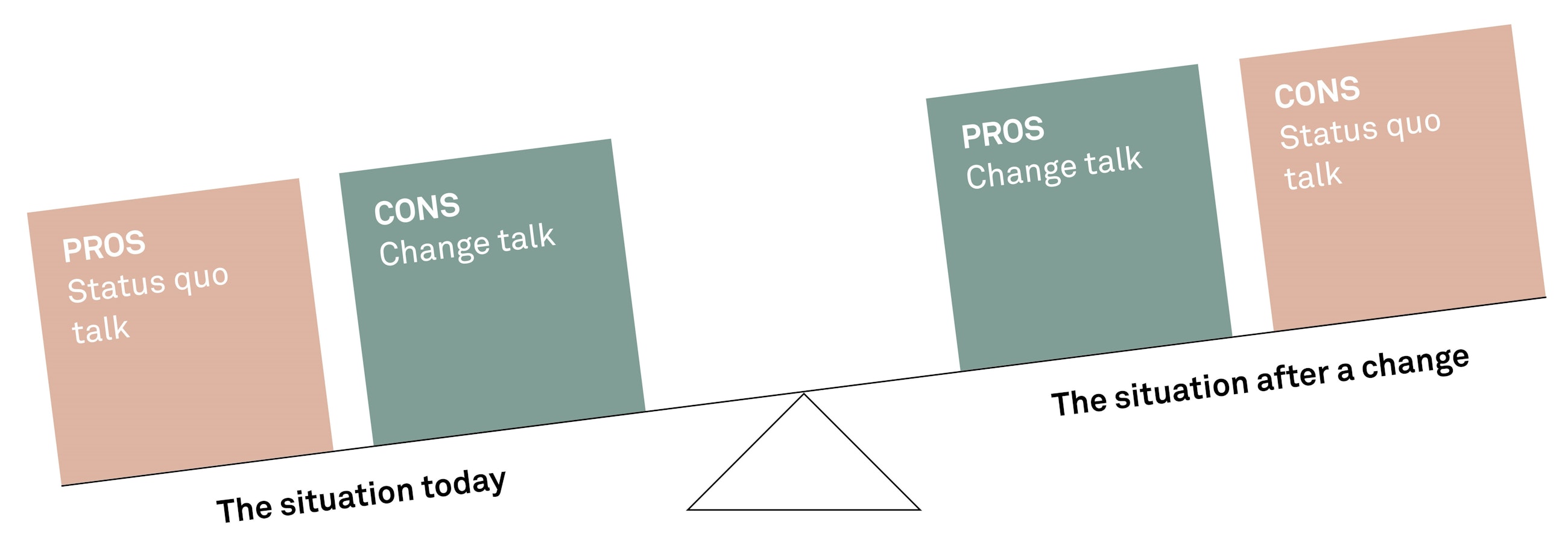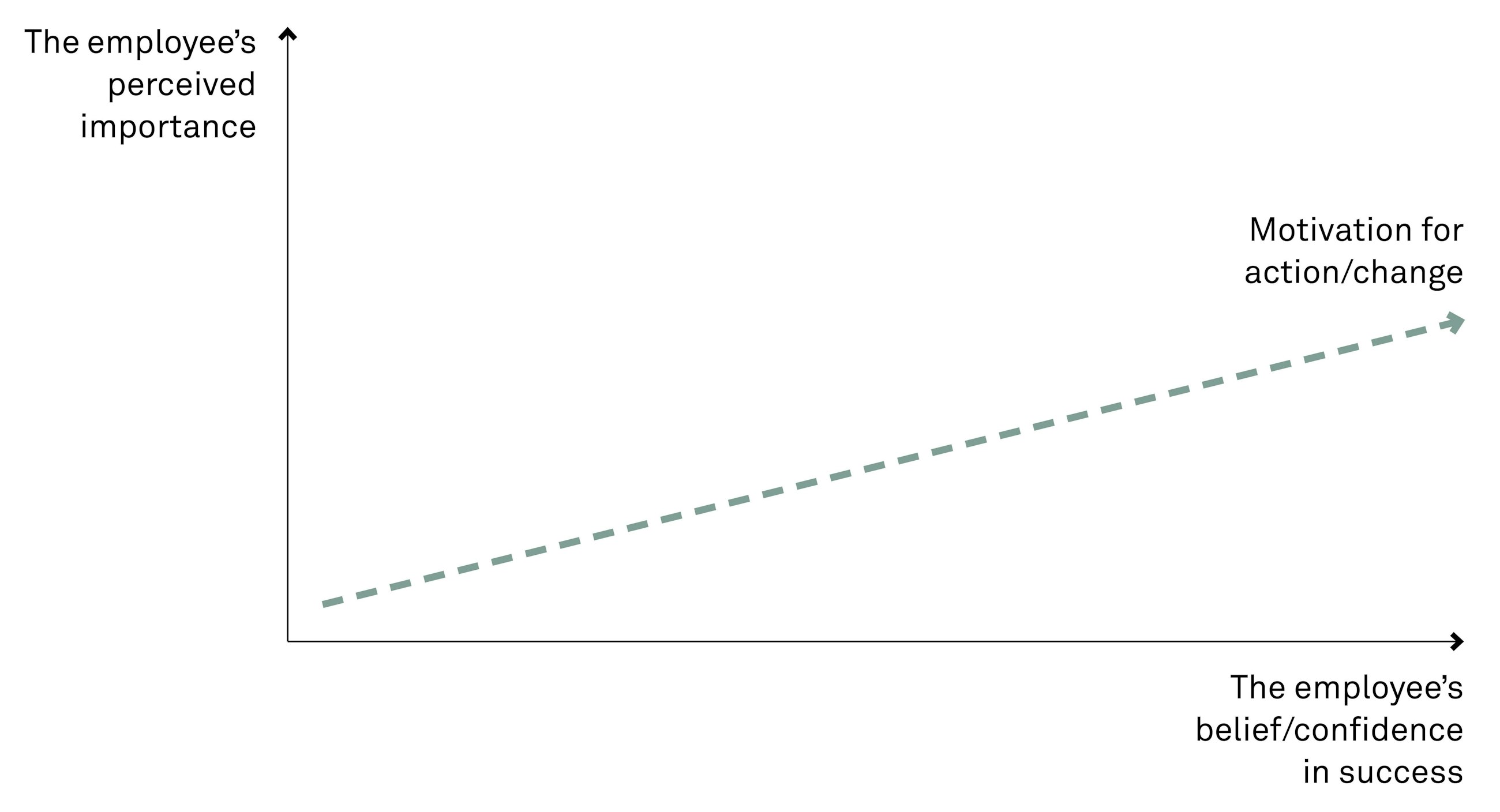- the arrow might be pointing at you
11 November 2015
You have no unmotivated employees – they are actually always motivated. Sometimes they just happen to be motivated for doing something different than what you want them to do in a given situation. Learn how to point motivation in the right direction.
Imagine that you have just held a staff meeting. At the meeting, you agreed to implement new working procedures for all employees as a necessary tool to reach your department’s strategic goals. Four weeks after the meeting, you realise that three of your employees have not changed their working procedures at all.
If the change represents something important to the employee, and the work assignment contains a certain level of complexity, good advice and instructions are of no use. Surprisingly, they will probably have the opposite effect and drive the employee further away from the new desired working procedures.
This is due to your good advice which may evoke the employee’s need to justify himself and to tell you that you have not taken all aspects into account. As a result, the new working procedures may seem a bad idea after the conversation now that the employee has heard himself argue why they do not make sense.
If that is the case, you need to affect the employee’s motivation in a different manner. Here you will be presented with two tools to help you point motivation in a certain direction.
Explore the decisional balance
Every time an employee has to make changes in his working procedures, a mental balancing act occurs. On the one hand are the advantages and disadvantages of the familiar working procedures, on the other hand are the advantages and disadvantages of changing to the new working procedures. Whenever the employee may be perceived as unmotivated, it may be due to the fact that he is divided between the two alternatives: either to carry on as up to now or to change behaviour and do it the new way.
Being divided and feeling ambivalent is the nature of all changes. What decides the employee’s future behaviour when making a change is which side carries the most weight on his decisional balance.
The first step towards avoiding a reinforcement of the employee’s negative pattern of thought is that you are conscious about what you make the employee say and think during your conversation.
When the employee finds his own way
Several research reports indicate that people are inclined to do what we hear ourselves say and think, even when it concerns irrational behaviour. When you start proposing concrete solutions, the employee will very often react defensively. He will find a number of arguments why the solution is a bad idea or why it will not work, and he will start talking about the disadvantages of following the proposed solution: “Yes I understand, however, on the other hand …”
This is a natural reaction when we feel misunderstood and ignored, or when we feel that the complexity we experience every day is overlooked. The more you as a leader push your employee, the more his thoughts and talk will focus on the familiar side of the decisional balance. This will thus increase the probability that he will carry on with his usual behaviour.
Find motivation using questions
The first step towards avoiding a reinforcement of the employee’s negative pattern of thought is that you are conscious about what you make the employee say and think during your conversation. Try to examine and understand the employee’s choice between two alternative actions, e.g. by methodically posing questions inspired by the decisional balance:
- In your opinion, what are the advantages of continuing to work the same way you do today?
- In your opinion, what are the disadvantages of continuing to work with the existing working procedures?
- In your opinion, what are the potential advantages of working in a new way?
- In your opinion, are there any disadvantages?
This way, both you and the employee will become aware of the advantages and disadvantages which the employee is trying to balance in. That in itself will also be perceived as appreciative and motivating by the employee.
Keep track of your conversations using the motivation coordinate system
After having explored the motivational balance, you can focus on what is significant to the weighting between continuing unchanged versus getting started on the new working procedures. For instance, what determines whether some advantages and disadvantages carry more weight on the decisional balance than others? The motivation coordinate system will provide you with inspiration.
The motivation coordinate system consists of two axes: The vertical axis shows the employee’s perceived importance (how important does the employee think that the change is) while the horizontal axis indicates the employee’s belief or confidence in success (how likely is it that the new behaviour is possible).
The vertical axis indicates if the perceived advantages and disadvantages of the new as well as the existing working procedures are consistent with the employee’s own experience, subject matter knowledge, values and understanding of the future of the organisation.
You can examine this further by asking questions such as: “Are there any elements in the advantages of the new working procedures you mention that are in line with your experience and what you believe is important?” It is crucial that the employee is the one who presents the arguments. That way you will be able to evoke the motivation of the employee through his own perception of the importance of the behavioural change.
The horizontal axis indicates the employee’s belief or confidence that it is possible to carry out the action in practice. Research shows that it is vital to an employee’s motivation that he has faith in his own abilities as well as confidence in the organisation’s supporting structures in connection with a change. This aspect of motivation can be examined e.g. by asking: “Is there something we can do together to increase the probability of success?”
The assumption that unmotivated employees do not exist comes from a Danish book “Aim for motivation – Motivational Interviewing in leadership” in which the internationally recognised method “Motivational Interviewing” is introduced for the first time in a management context. This method has been developed and tested during the past 30 years within areas where motivation often has very difficult terms, e.g. in the area of substance abuse as well as job activation of long-term unemployed people.
This is a translation of an article which was published on lederweb in november 2013.






